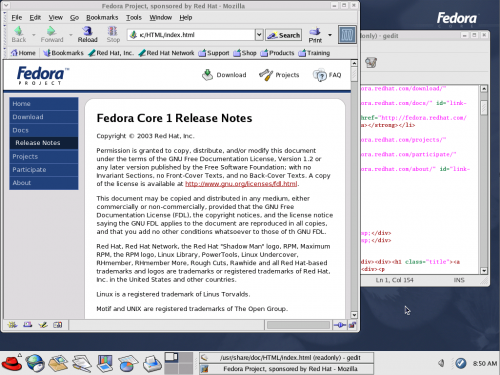History of Icons looks at the evolution of icons used for desktop, mobile, and web. There are plenty of nostalgia triggering screenshots from a variety of systems. Given that nobody could ever afford having all of those systems, I’m sure you’ll find interesting screens from computers you didn’t have or didn’t see.
Tag: history
The History of English in 10 Minutes
https://www.youtube.com/watch?v=njJBw2KlIEo
Things Every Hacker Once Knew
Eric Raymond goes over a few things every hacker once knew.
One fine day in January 2017 I was reminded of something I had half-noticed a few times over the previous decade. That is, younger hackers don’t know the bit structure of ASCII and the meaning of the odder control characters in it.
This is knowledge every fledgling hacker used to absorb through their pores. It’s nobody’s fault this changed; the obsolescence of hardware terminals and the near-obsolescence of the RS-232 protocol is what did it. Tools generate culture; sometimes, when a tool becomes obsolete, a bit of cultural commonality quietly evaporates. It can be difficult to notice that this has happened.
This document is a collection of facts about ASCII and related technologies, notably hardware terminals and RS-232 and modems. This is lore that was at one time near-universal and is no longer. It’s not likely to be directly useful today – until you trip over some piece of still-functioning technology where it’s relevant (like a GPS puck), or it makes sense of some old-fart war story. Even so, it’s good to know anyway, for cultural-literacy reasons.
The article goes over:
- Hardware context
- The strange afterlife of the outboard modem
- 36-bit machines and the persistence of octal
- RS232 and its discontents
- UUCP, the forgotten pre-Internet
- Terminal confusion
- ASCII
- Key dates
Found via a couple of other interesting bits –
What we still use ASCII CR for today (on Unix) and
How Unix erases things when you type a backspace while entering text.
NCR Patents the Internet
I came across this old story (back from 2003) on Slashdot – NCR Patents the Internet – and it even more hilarious now than it was back than:
We all know about NCR’s lawsuit against Palm & Handspring, but I haven’t seen much press about patent infringements they are claiming against some of the biggest sites on the planet. According to documentation that a friend’s company has recently received, their patents protect everything from keyword searching to product categorization. Patents to look for (and filed in 1998) include 6,253,203, 6,169,997, 6,151,601, 6,085,223 and 5,991,791 . IMHO, this is absolutely outrageous and is likely to cause billions in both legal fees and eventual licensing fees (eBay, Amazon and MSFT have already licensed from NCR). How is this not the lead story on every site? every day? Maybe because no one wants to get sued for having an online business.
The comments are hilarious as well.
How Linux got to be Linux: Test driving 1993-2003 distros
Here’s a trip down the memory lane – “How Linux got to be Linux: Test driving 1993-2003 distros“. The article looks at some of the early Linux distributions, remember what was already in and what came later. Complete with screenshots.
I don’t remember for sure which versions of which distributions I used in the early days, but Slackware, Suse, RedHat and Mandrake were definitely among those. Slackware was probably my first one, when I found the floppies in the only book on Linux at my college library. Then, somehow, I found RedHat (I think 5.1 or so) in one of the local computer shops. Later I tried Mandrake and Suse, cause those were laying around at work. But RedHat stuck with me ever since. I think I’ve used pretty much every version, including the move to Fedora, CentOS, and even the Red Hat Enterprise Linux, which we had the licenses for at some of my early work places.
Fun times!
